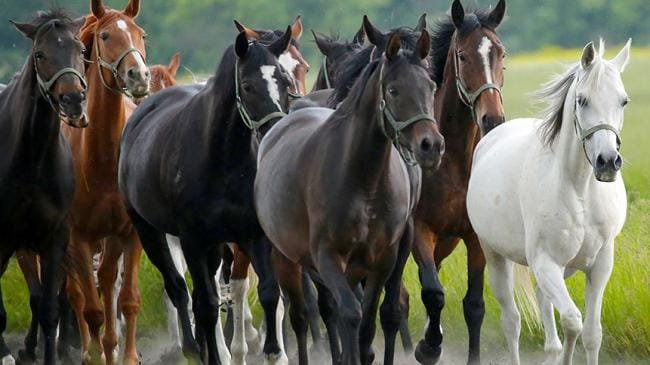A Journey Through Time: The Evolution of Horse Breeding Practices
Horse breeding has a rich history that spans thousands of years. From the wild ancestors of today’s horses to the carefully curated breeds we see now, the journey of horse breeding reflects human innovation, agricultural needs, and cultural shifts. Let’s explore this fascinating evolution, highlighting key milestones along the way.
Ancient Beginnings
The story of horse breeding begins around 4000 BC, when humans first domesticated wild horses in the steppes of Central Asia. These early horses were primarily used for their strength and speed, aiding in hunting and transportation. As societies evolved, so did their needs. Horses were selectively bred for specific traits, leading to the emergence of distinct types suited for various tasks.
The Influence of Civilizations
As civilizations grew, so did the importance of horses. The ancient Egyptians, Greeks, and Romans all made significant contributions to horse breeding. For instance, the Egyptians developed breeds known for their beauty and agility, like the Arabian horse. The Greeks and Romans valued horses for their role in warfare and sports, leading to the creation of breeds like the Andalusian.
Breeders began to pay close attention to lineage, recognizing that certain traits could be passed down through generations. This marked the beginning of structured breeding practices, where horses were chosen based on their ancestry, conformation, and performance abilities.
The Middle Ages
During the Middle Ages, horse breeding became even more specialized. The rise of knightly warfare created a demand for powerful and agile horses. Breeds like the Clydesdale and Percheron were developed for their strength, suitable for carrying knights in armor and pulling heavy loads. The period also saw the emergence of the Thoroughbred, bred for speed and endurance, primarily for racing.
Breeding practices became more sophisticated, with the establishment of stud books and formal breeding programs. This shift laid the groundwork for modern breeding techniques, allowing for more predictable outcomes in terms of traits and abilities.
The 19th Century: A Scientific Approach
The 19th century marked a turning point in horse breeding, as scientific principles began to influence practices. Advances in genetics and a better understanding of heredity allowed breeders to make more informed decisions. The introduction of artificial insemination in the early 20th century revolutionized the industry, making it easier to spread desirable traits without the need for physical proximity between horses.
This period also saw the rise of breed registries, which documented lineage and established standards for various breeds. Organizations like the American Quarter Horse Association and the Jockey Club were founded, further formalizing the breeding process.
Modern Breeding Techniques
Today, horse breeding has become an intricate blend of tradition and technology. Modern breeders utilize genetic testing and artificial insemination to ensure the best possible outcomes. These techniques allow for the preservation of endangered breeds and the enhancement of desirable traits, such as temperament, speed, and endurance.
In addition, the emphasis on welfare and ethical breeding practices has gained traction. Breeders are now more aware of the importance of health and temperament in their horses, focusing not just on performance but also on creating well-rounded animals suitable for various disciplines, from dressage to jumping to trail riding.
The Future of Horse Breeding
As we look to the future, horse breeding continues to evolve. Innovations in biotechnology, such as gene editing, hold the potential to create horses with enhanced capabilities and improved health. However, this also raises ethical questions about the extent to which we should intervene in natural processes.
Moreover, the rise of equestrian sports and recreational riding has broadened the scope of breeding, leading to an increase in mixed-breed horses that excel in specific activities. The focus is shifting towards versatility and temperament, making horses suitable for a variety of riders and purposes.




